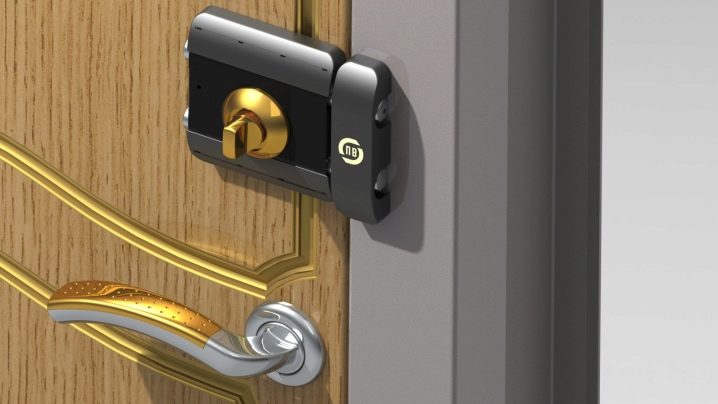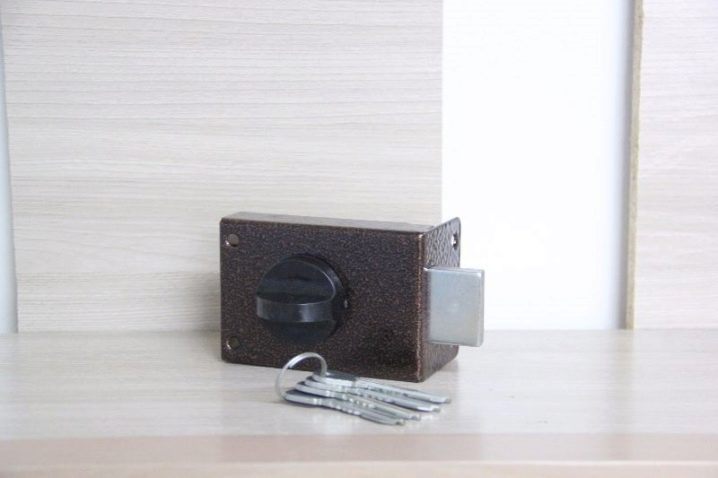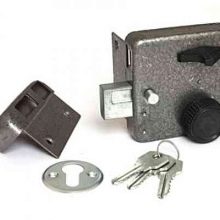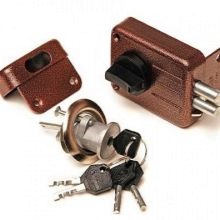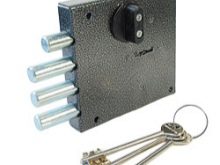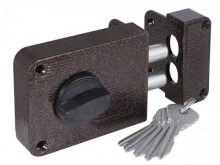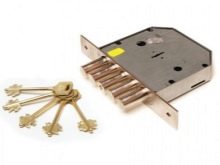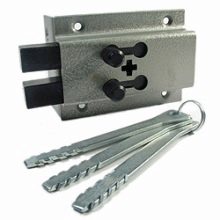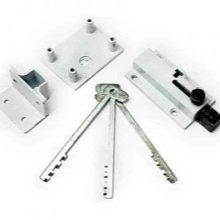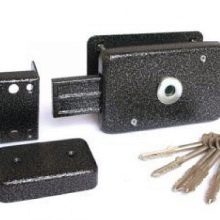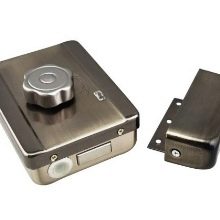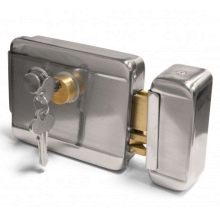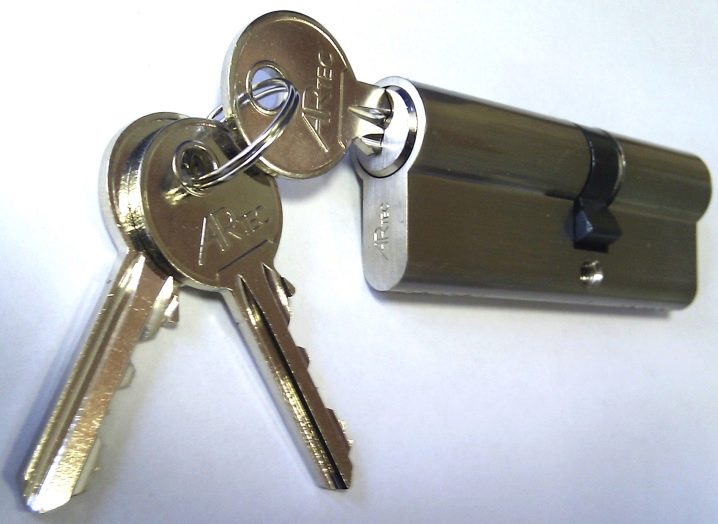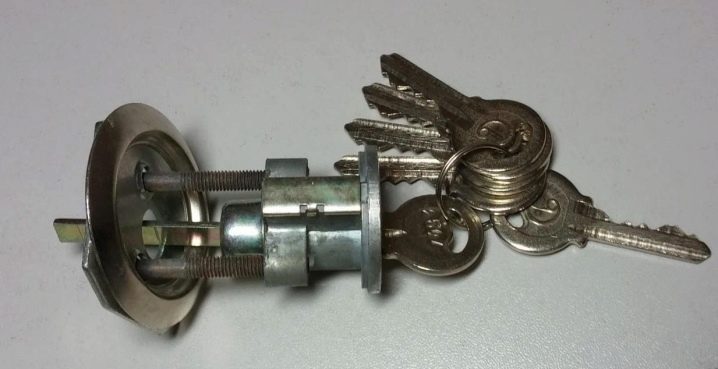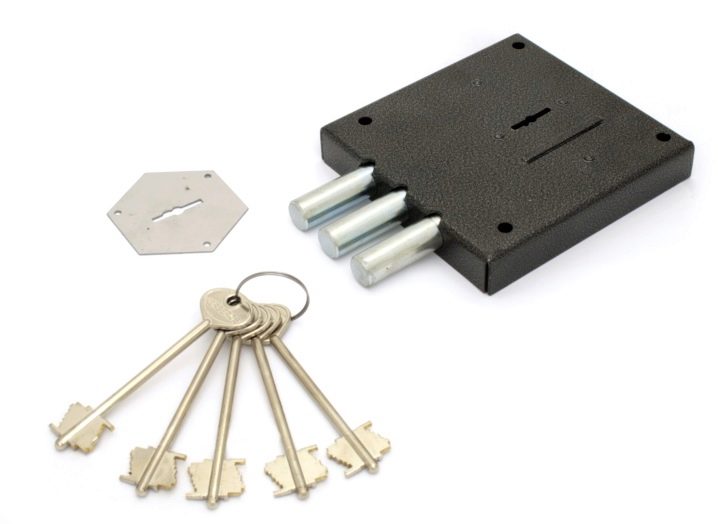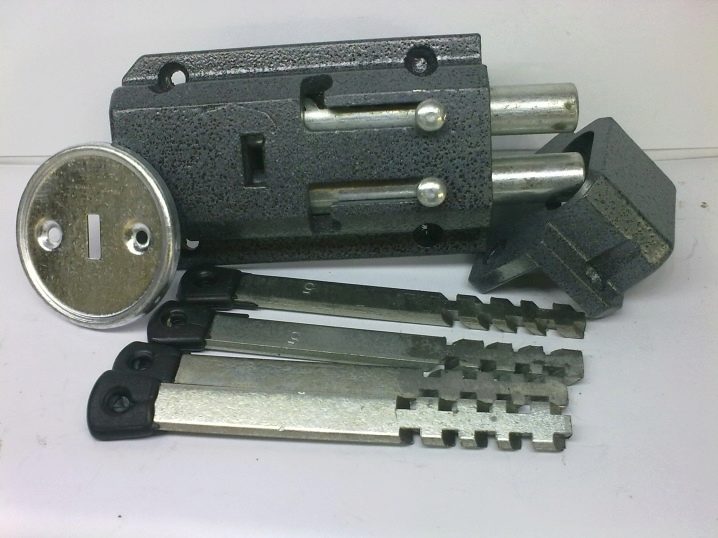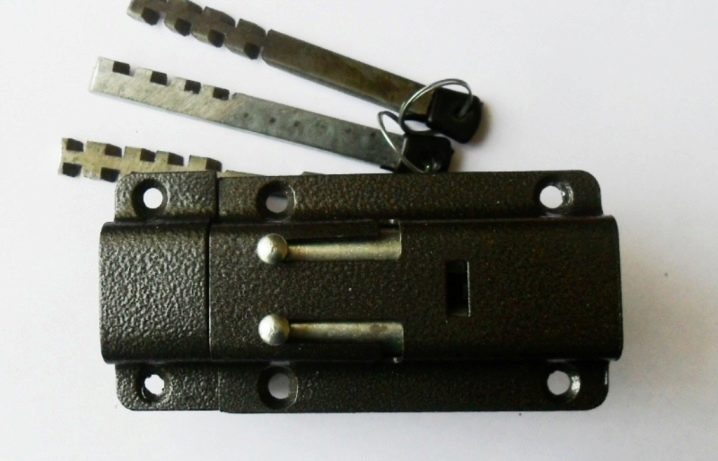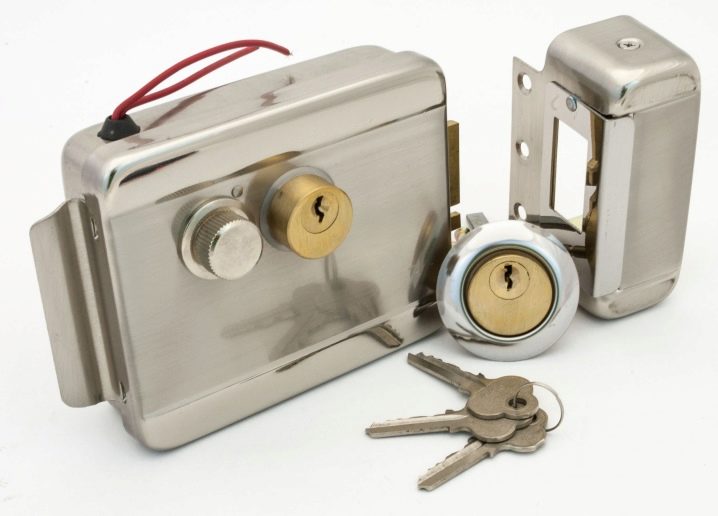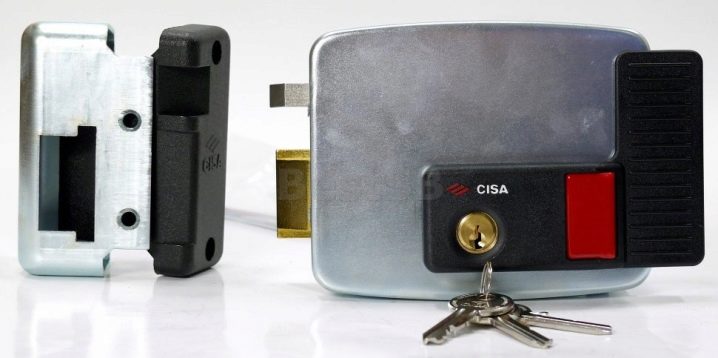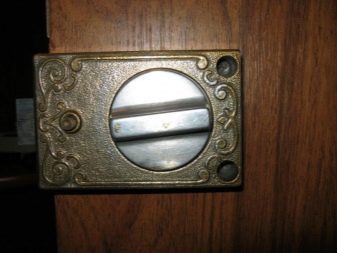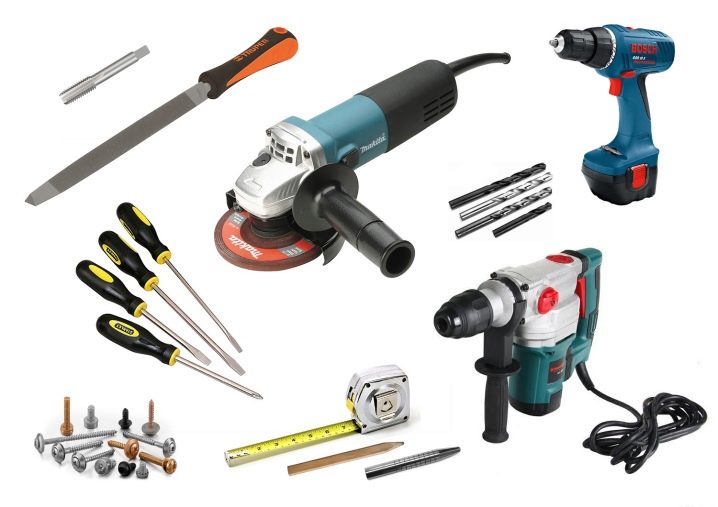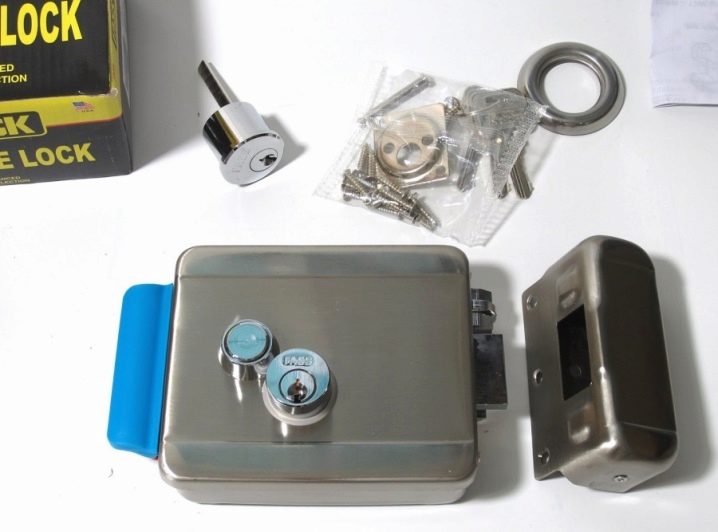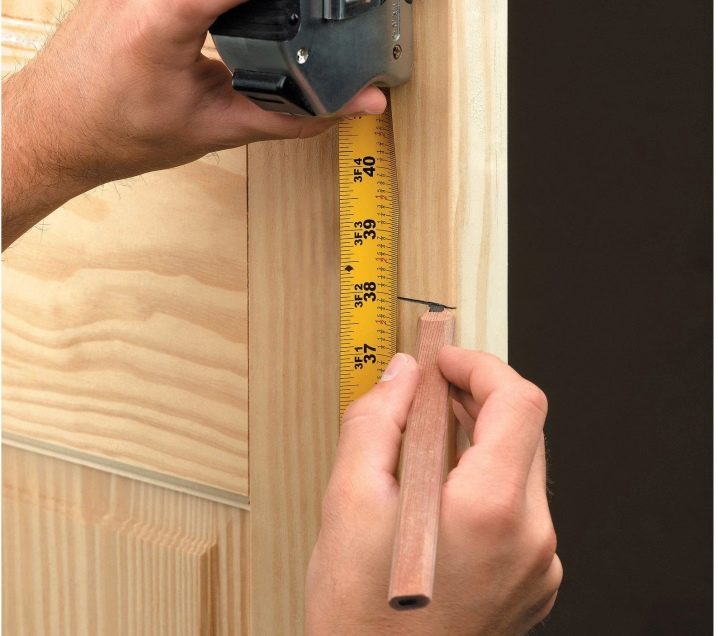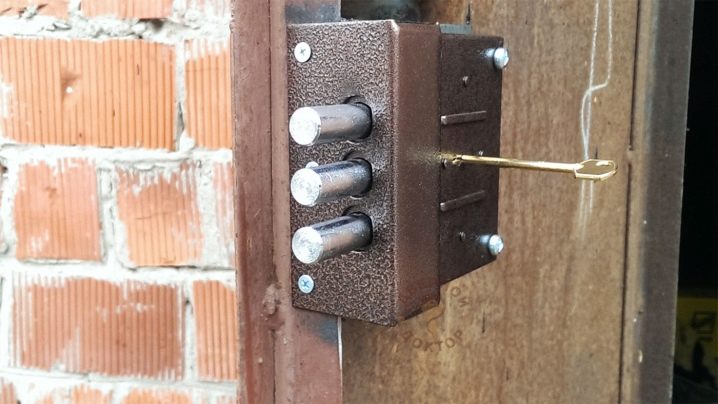Types and technology of installation of the padlock on the metal door
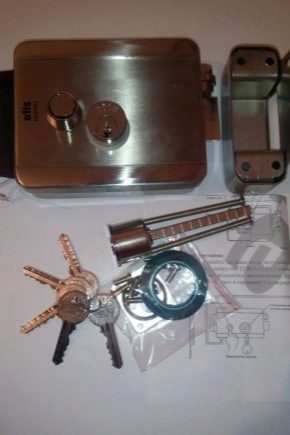
The expression “my home is my fortress” is not just a figure of speech. The lock is an important element of the door structure, a mechanism that locks and unlocks the moving canvas, mounted on hinges. Laid on version of the lock is the easiest to install and operate. Metal doors provide greater durability and security. The main requirement for the lock - resistance to cracking with reliable use.
Design features
Overhead locks for entrance doors are additional locking devices that are used in the complex for locking the entrances of residential and office premises, warehouses, workshops and other industrial buildings.An important aspect is the possibility of using the latch and knob of the swivel mechanism in case of internal closing. The inability to loosen fasteners from the outside is a minus for intruders. It is theoretically available for users to self-repair and installation of such products with minimal metal skills. The difference compared to wood is only in the means of attachment to the desired material.
Varieties of products
The lock is a product for locking which carries out the function by different methods in various options. Overhead locks are installed on the door leaf, mortise - cut into the inside, padlocks - are hung on special hinges. Mechanical locks are opened with a key, code locks - by entering a special code, signal or magnetic card. Overhead locks are mechanical and electromechanical. The simplest device and the lowest price for mechanical locks. More sophisticated electromechanical variants use electronic pulses that control the locking system.
An important aspect of the reliability of the actuating locking mechanism is the material from which it is made.Quality steel is better than cast iron, although the latter is massive, it is quite brittle when exposed to low temperature. Low-quality materials are inferior to good steel even more.
According to the design of the locking mechanism, overhead locks are divided into the following main types:
- cylinder;
- suvaldnye;
- rack and pinion;
- electromagnetic.
Advantages and disadvantages
Cylinder locks get their name from the cylindrical shape, in which a unique larva is immersed, which is the basic element for actuating the locking mechanism. Industrial manufacturing method standardizes the larva, allowing, if necessary, to quickly carry out its replacement.
The advantages of the cylinder lock are the following:
- optimum ease of installation;
- wear resistance of the mechanism;
- reliability;
- small key.
Minus compared with some other designs - less resistance to cracking due to the small size and low massiveness.
A level overlay lock is a rarer consumer phenomenon, since such a device is usually offered in mortise versions.However, as an option constipation for the entrances of residential premises and such locks are in demand. This constructional type uses a long key that drives the levers. So called plate actuator lock, from which he got his name. The more suvald - the harder it is for a hacker to pick up the master key.
The design offers a more robust option for hacking, but this affects some aspects of use. Level locks are more capricious in frequent use and require regular lubrication. Careful attitude is a guarantee of durability. The long key is another feature of this design. There are no fundamental differences with the installation.
Rack lock is considered more simple compared to the two previous types. Opening and locking occurs due to the combination of key and bolt profiles. This is a more ancient construction. The key is a square, round or rectangular rod, which in the keyhole has only a forward or reverse movement. The basis of the locking - the force of the springs. By pressing the key, the user compresses the springs,and the bolt unlocks the door with its movement; after removing the key from the keyhole, the springs unclench, moving the bolt to its original position. The lock is closed.
The main advantages are the following:
- low cost of the product;
- ease of operation;
- very long service life.
However, all of these qualities are overlapped by an extremely significant disadvantage - lower protective properties due to the simplicity of the design. Another significant problem is making duplicate keys, since such locks can be made even in a handicraft way or in a single copy.
Electromechanical (electromagnetic) locks are a different, more modern and expensive principle that uses electrical power. Reading code information is carried out using a scanner, magnetic card or special key. Locking devices of this kind consist of a mechanical part, a power unit, a control and a reader. When installing, programming occurs, hacking is very time consuming. Modifications are very broad, decisions depend on the specific interests of the user and his budget.
The main advantages include the following:
- possibility of remote control;
- absolute lock from the inside;
- long service life;
- excellent resistance to cracking;
- ability to work with other devices.
Among the shortcomings worth noting the following:
- the need for a constant supply of electrical energy;
- high price;
- poor performance in conditions of high humidity and strong cooling.
Tips for choosing
The choice of the lock is determined by such three main points as:
- type of protected premises;
- budget;
- wishes for stability from hacking.
For garages and warehouses it is preferable to use powerful level locks, for residential premises - a combination of cylinder and lever locks or electromechanical. It should not be forgotten that the quality of the lock is the quality of the manufacturer. For residential premises, break resistance should not be less than the third class. According to GOST 5089-97, there are four classes of burglar-proof locks, which are determined by the general method. This parameter is usually indicated in the passport of the product manufacturer. The higher the class, the more reliable the lock.
Overhead locks of various types have a common unifying property - fundamentally the same installation. Fasteners differ only in what kind of door leaf material is used. In the case of a metal door, these are the elements that will be able to attach the locking product to the metal. For wooden doors, there are enough self-tapping screws; for metal doors, pins and the corresponding fasteners are used. Naturally, the fastening pins are welded.
Required installation tools
Tools are the means of turning a lock in a box into a properly working device in its place. As a rule, this requires the following tools:
- electric drill with the necessary drills in diameter and quality;
- Bulgarian;
- measuring tools and fasteners;
- file;
- core;
- pencil;
- electrical extension cord;
- screwdrivers;
- sometimes paper.
Installation technology
In order to install a lock on a metal door, you must perform a series of sequential actions. The main task of the installer is to firmly and precisely secure the locking mechanism in the place provided.As a rule, it is located at a height of 90–100 centimeters from the floor and above, and also should not be located closer than 30 centimeters from another locking device in order to make the design more reliable. The installation process consists of several steps.
- Make sure that the door does not open inwards, but outwards. This is an important element in ensuring overall cracking resistance. A specific copy of the lock must correspond to how the door opens, to the left or to the right.
- Assemble the necessary tools for the preparation of installation. Everything should be ready for future manipulations.
- Check the completeness of the lock. Items are required in stock. It is better to verify this beforehand, and not during the installation. A normal manufacturer will equip your product not only with a description, but also with clear installation instructions.
- Make markup. As already mentioned, the lock must be installed on the door leaf from inside the room. In the selected place should be attached lock. Mark, not forgetting the location of the mounting pins and the key hole. If you have difficulties with applying labels, you can use the paper, having previously fixed it with tape or glue. Paper should not move.
- Drill holes for pins and key. The pins to the iron door are welded.
- Secure the lock to the door leaf using pins and fasteners. From the outside, do not forget about the cover covering the keyhole.
- Insert the key and turn, pushing the locking bolts of the lock to the maximum distance. Paint the place where they run into the door frame. This is where the holes for constipation are made. With the help of a file edges are refined.
- Set the bar for fixing the closing of the door so that the lock is locked well, accurately and "without roughness". Precise operation when turning the key or the locking knob should be combined with the hinging of the retractable bolts in the designated construction site. The door should close tightly and silently and open well.
Important! The main requirement at all stages of installation is maximum accuracy. By marking, drilling and fastening must be approached as responsibly as possible. The result of the installation is the result of skills and practice, the combination of an eye gauge and the work of tools for metal.
Naturally, when installed on a garage door or garden wicket there will be certain differences related only to the design of the doors and the conditions of use of the lock.For a more durable steel entrance door, all basic installation steps are similar. These doors are gaining popularity among those who want to further increase the resistance to cracking due to the quality of the steel alloy construction. Padlocks at the gate are becoming a thing of the past. Modern code, cylinder and lever locks have come to replace them. Eternal competition of hacking and protection, where, the more effective the hacking technologies become, the further the protection develops.
How to install a security lock on a metal door, see the video.
